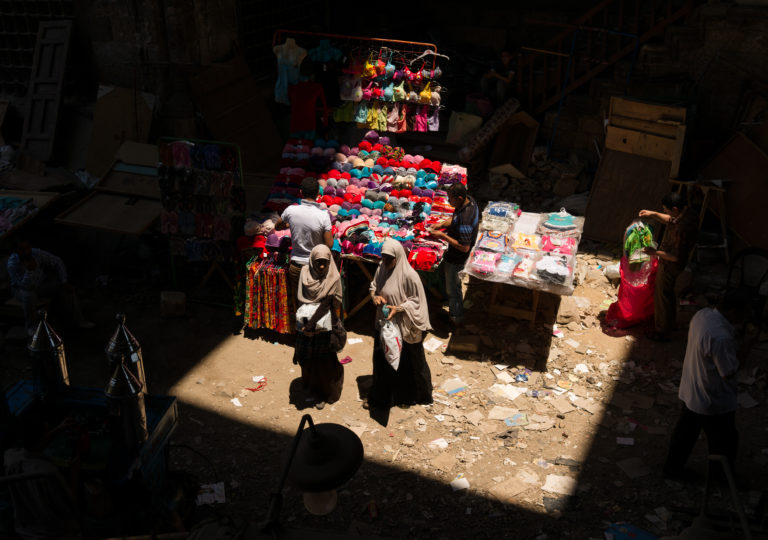
Image by Frank Schulenburg.
Vividity: The Color of Life as Prayer
Have you ever had a “lucid dream”? A dream in which you are conscious of dreaming? Have you ever experienced “vivid prayer”? Prayer that begins in the heart, then walks boldly out into the sharp light of day? Prayer may start beneath our closed eyelids. But what happens when we set our devotions free?
It’s been a tough week. You’re going about your daily routine, driving to work, shopping for groceries, chopping vegetables for stew. You’re thinking of… not much. Or maybe your brain is filled with noisy chatter.
And then your eyes polish themselves. There’s an up-tick in your heart. Your movements become natural and unforced. You feel beautiful and un-self-important. You look around. Those flashing, shining cars! Those wonderful strangers engrossed in their cell phones! Even the fifth ambulance of the day is not a cause for annoyance. You remember someone may be injured as it screams past. You send a word of protection after its pulsing lights, its invisible streamers of sound.
What just happened? One moment, things are bland, predictable. The next, life is unwrapped and shining before you. Such moments can feel mysterious, reverent. They may also feel deeply familiar, like coming home:
“Being born is like this: The sunflowers slowly turn their corollas toward the sun. The wheat is ripe. The bread is eaten with sweetness. My impulse connects to that of the roots of the trees.”
— Clarice Lispector
Can you think of a time when life seemed both prayerful and hyper-real? Did you experience a sharpening of your senses? Did the physical world seem infused with a light all its own? Perhaps, as an experiment, try to jot down a few words associated with these memories. A quick sketch, nothing too studied or edited. What image, echo or feeling emerges?
Under the trees, dusk-light settles over tables and chairs, families enjoying a late supper. Candles in glass votives float on each tabletop. We drink Hungarian lemonade, tall glasses filled with limes, oranges, and crushed mint. My friend is barely visible, and I too fade into the gold shadows. We’re trying to describe life at its sharpest and purest.
“I’m not sure if it’s a word, but what about ‘vividity’?” my friend says. More than vivid, more than vibrant. When the world is laced with a sacred vitality.
“Vividity,” I repeat. “That’s it.”

Vivid prayer can be transformative and elusive. Nothing has changed, apparently. Yet everything appears new-washed. Unlike prayer removed from daily life, this is prayer in the midst of the daily grind. It is rarely expressed in words or doctrine. Rather, it is a music, a pulse. The shimmer of leaves. The smack of your feet on the sidewalk. The rise and fall of the knife on the cutting board.
I’m curious to learn what precipitates or enables our lives to take on new depth, new color, new meaning. What causes us to enter more fully — and frequently — into a state of living prayer?
Perhaps, on the brink of a big change, you sense an electric beauty thrumming through the last days or minutes with a familiar landscape, friend, or workplace. Suddenly, like the flash of a male cardinal through winter skies, the same-old same-old is transformed into soul. Or maybe you’ve been doing the hard work — the hardest human work — of being honest with yourself, acknowledging your burdens, and turning them into gifts. You’ve been alone, exhausted. Burned out by being too close to that winnowing inner light.
Then, a morning comes when morning itself is not so painful. You sense a new pleasure — gratitude — in being part of this world, no matter the hurt and craziness all around. And the world rushes to meet you — to welcome you — dazzling you with its undiscovered wealth. A neighbor child’s random hug. A homeless woman’s blessing. A bunch of peacock feathers lying in the street. A postcard from a silent friend.

Five senses — and the limited spectrum of wavelengths we dwell in normally — do not seem adequate during these moments of increased vibrancy and vitality. Similar to a lucid dream, there seem to be multiple levels of awareness during vivid prayer, all working together:
1. Awareness of being consciously alive
2. Awareness of capacity for freedom and growth
3. Awareness of personal and generational memory
4. Awareness of self-in-community
5. Awareness of environment and relationships
6. Awareness of inner meaning and beauty
7. Awareness of concentration and intention
But awareness requires experience — real struggles, often with ourselves. Vivid prayer grows from experiences that penetrate our deepest, most hidden core:
1. Experience of intimate loss
2. Experience of oppression or limitation
3. Experience of rootlessness
4. Experience of doubt and fear
5. Experience of isolation
6. Experience of numbness or disconnection
7. Experience of conflict and disunity
Before these seven experiences (and others I haven’t listed), we may feel more “happy” and secure, but often less awake. Prayer may be something we do in quiet moments, but not as a state of being. Some of these experiences can push us right to the edge of endurance, even sanity. We may go into a tailspin, unsure of who we are and unable to claw ourselves free from circular thinking and destructive behaviors.

The inner lives of Buddhist nuns living about 2,500 years ago are collected in poems called the Therigatha. These verses express women’s journeys from mental and physical anguish into liberation:
“And so I lived, filling my body with joy and happiness.
Seven days after splitting open the mass of mental darkness,
I stretch out my feet.”
— Vijaya (Therigatha)
For many people, struggle leads to the grace of loving awareness. Encouragement, friendship, and service to others help open us to this grace. For some, the opening is sudden; for others, almost imperceptible. We may spend years dancing to-and-fro across the threshold of our prison cell. It is not always hope that keeps us going. It is rather the insistent life in us: millennial, adaptive, and brave as our inner wilderness.

Like Nature herself, our untamed “inscape” may be fearsome and sublime, but it is also playful. During a time of tests, I had a light-filled dream of swimming with a pod of seals. I woke refreshed and reminded that the gutting work of being human is spacious enough for laughter, dance:
“Surely all God’s people, however serious or savage, great or small, like to play. Whales and elephants, dancing, humming gnats, and invisibly small mischievous microbes — all are warm with divine radium and must have lots of fun in them.”
—John Muir
In a letter titled “The Importance of Lightheartedness,” psychologist and father of lucid dream research Paul Tholey writes: “a composed and lighthearted attitude towards reality and one’s own self is conducive to the learning of lucid dreaming.”
In dreams, we can break the laws of physics and fly through the air. Vivid prayer allows us this inner freedom while being more awake, more centered, and more at peace.
The good news is: you don’t have to wait until you fall asleep tonight to try this. In fact, you are inside a vivid prayer right now. What new colors and gifts fill you?

